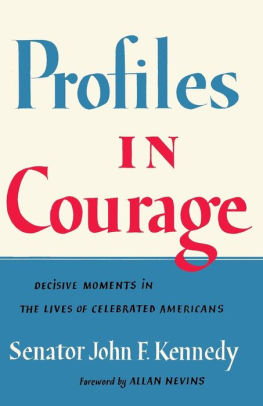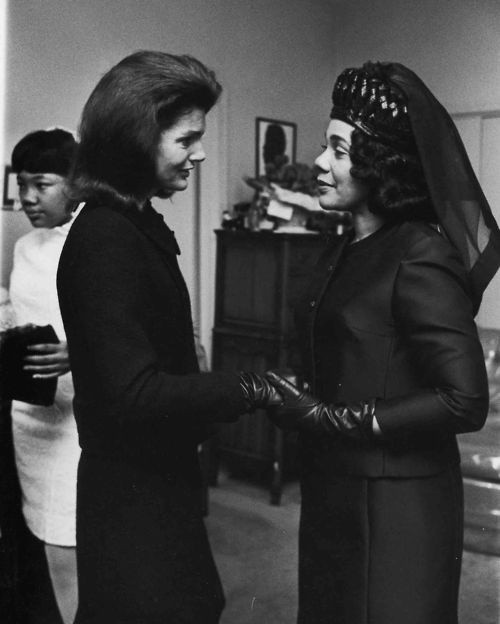Part 2: The Media Spin-Dries JFK on Civil Rights
I. The MSM Vitiates the Record on JFK
As I said in my introduction to Part 1, from the work of Larry Sabato in 2013, I suspected the MSM would attempt a preemptive strike against President Kennedy’s civil rights achievements at the 50th anniversary of the MLK/RFK assassinations, for the obvious reason that both of those men were strongly involved in that struggle. Steven Levingston, of the Wall Street Journal and Washington Post, led it off. I would like to give Levingston some career advice. He missed his calling. He should have been a playwright. His 2017 book Kennedy and King is such a carefully crafted confection it would have done Tennessee Williams or Edward Albee proud. As history, it is worthless; but that is not what Levingston is interested in. At the outset, he sets up an external dramatic agon between Martin Luther King and John F. Kennedy, declaring that “King had to overcome White House mistrust, disregard, and stonewalling before his message sank in.” (Levingston, p. xi)
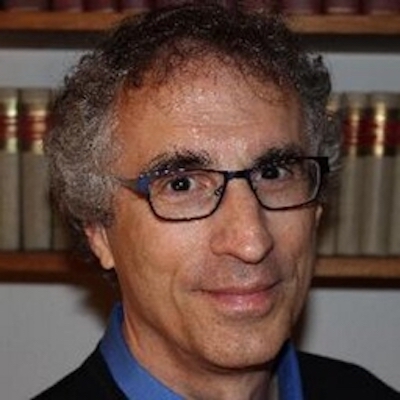 |
| Steve Levingston: Missed his calling |
This is utterly false. As opposed to Eisenhower, the Kennedys began working on the racial issue quite quickly—without King. And they did not stop until they did something that neither Eisenhower nor Truman came close to doing—they got an omnibus civil rights bill into Congress and worked hard to see it through. (As we shall see, the idea that Lyndon Johnson got the milestone Civil Rights Bill of 1964 passed is a myth.)
In Part 1, I described the terrible conditions that existed in the South due to the failure of Reconstruction. This created a huge obstacle in trying to correct the immense problem, since the power structure of the South was built upon it. How does Levingston assess this horrendous record that confronted the Kennedy administration? About all the horrible things done in the South from Reconstruction onward, Levingston is rather dismissive. He writes, “So far from being modernized, in many ways the Southern Mind has actually always marched away from the present toward the past.” (p. 16) Well, that is one way of dealing with the torture murder of Sam Hose, the massacre at Rosewood, and the destruction of a whole section of Tulsa. But as far as establishing a historical backdrop, it means zilch. On top of that, there is next to nothing about the paltry record of FDR, Truman and Eisenhower.
Another part of the plan is to make Kennedy out to be rather timid on a number of issues, not just race. Like every other cheapjack writer on the scene, Levingston does what he can to make the worst of the Joe McCarthy episode for Senator Kennedy. He tries to say that somehow Kennedy’s failure to show up and vote during the censure roll call against Joe McCarthy in December of 1954 exhibits this character flaw. But he also acknowledges that Kennedy was in the hospital at the time, seriously ill, lapsing in and out of consciousness. (Levingston, pp. 22-23) As Harris Wofford relates in his book, Of Kennedys and Kings, Senator Kennedy had been through a near-death experience—he was given last rites—due to a back operation at this time. (Wofford, p. 35) Should he have been wheeled onto the Senate floor, with his doctor next to him? The vote was overwhelming for censure anyway; the final tally was 67-22. This makes the idea that somehow Kennedy should have called in and “paired” his vote with someone who was against censure silly. Why? In order to add one more vote to the landslide? But further, in his weakened state, his assistant Ted Sorenson had written a speech for him to give in favor of the censure vote. So there is no doubt where he stood on the issue.
A key point Levingston completely leaves out is that it was the senator’s brother, Robert Kennedy, who had started the movement to censure McCarthy in the first place. Bobby Kennedy had been on McCarthy’s committee. He resigned since he did not like the direction in which Roy Cohn, McCarthy’s chief counsel, was taking that body. The Democratic minority later asked him back to be their chief counsel. In the summer of 1954, after both McCarthy and Cohn imploded during the Army-McCarthy hearings, Bobby Kennedy essentially took over that committee. He retired the cases against Irving Peress and Annie Lee Moss, dismissed the accusations of mass infiltration of defense plants, and then authored a report that was so critical of McCarthy and Cohn that some Democrats would not sign on to it. It recommended the Senate take action for their abuses. It was this report that led to the censure vote against McCarthy in December of 1954. (Arthur Schlesinger, Robert Kennedy and His Times, pp. 118-19)
But that’s not enough for Levingston. He now does something worse. He says that Senator Kennedy wrote his book Profiles in Courage to somehow apologize for not showing up on a gurney to mark the 68th vote to censure McCarthy. (Levingston, p. 25) Even for a reporter who worked for the Wall Street Journal, this is really out there. Profiles in Courage is about men in politics who did things that had no political advantage for them; they did them anyway since they thought they were right. Now, since 1951, John Kennedy had been out there by himself—in both the House of Representatives and the Senate—harping away against the Truman/Eisenhower approaches to communism in the Third World. In other words, he was, in part, criticizing his own party. It may have been crowd-pleasing and popular to suggest that the communist threat was the monolithic monster that the domino theory suggested, but Kennedy said that was not true. The force of nationalism, the desire to be free from European colonialism, was really responsible for much tumult in the Third World. (See my Destiny Betrayed, pp. 17-25) Senator Kennedy made speeches on this subject, gave radio interviews, and wrote letters to his electorate about it. But he had no Capitol Hill or White House followers in this crusade at the time. Would it not therefore be logical to assume that this is what motivated him to write the book? I mean, was he not doing something that garnered him little if any political favor simply because he felt it was the right thing to do?
But Levingston can’t go there. He can’t even mention it. First, it would illustrate the political and moral courage that Levingston wants to strip away from Kennedy. Second, it would also show that, from early in his political career, Kennedy had some understanding of the conditions of colonialism and imperialism that were imposed on people of color in places like Africa.
In keeping with his preplanned construct, Levingston does not begin to address Kennedy’s actual involvement with the whole race issue until 1959 and his preparations to campaign for the Democratic presidential nomination. This eliminates a rather important fact: namely, that, unlike Eisenhower or Nixon, neither of whom endorsed the epochal Brown decision, Senator Kennedy did so in 1956:
The Democratic Party must not weasel on the issue … President Truman was returned to the White House in 1948 despite a firm stand on civil rights that led to a third party in the South … We might alienate Southern support but the Supreme Court decision is the law of the land. (NY Times, 2/8/56, p. 1)
That speech was made in New York, a liberal city and state. But in 1957, Kennedy went south to Jackson, Mississippi. He said the same thing: the Brown decision must be upheld. (Harry Golden, Mr. Kennedy and the Negroes, p. 95) The fact he did this in the Deep South would seem to denote the courage Levingston said Kennedy lacked. For, as author Harry Golden notes, it was at this point that Kennedy began to lose support in the South and even get angry letters about his advocacy of the Brown decision. But by not mentioning these incidents, Levingston can say that Kennedy exhibited little courage or morality on the issue. What makes it worse is that when one turns to his bibliography, Levingston lists Harry Golden’s book, which noted the incident way back in 1964. This is what I mean about being a playwright.
In passing, the author mentions Senator Kennedy’s vote on the bill constructing the 1957 civil rights commission. Levingston writes that Kennedy sided with the segregationists on a complicated procedural matter that watered down that bill. (p. 58) Even for Levingston, this is sorry. What watered down the bill was the removal of something that Kennedy voted for. This was called Title III. It allowed the attorney general to sue cities in civil court over voting rights and school integration. Kennedy backed that part of the bill. So how does being for that aspect jibe with siding with the segregationists? That part of the bill was voted down. (Golden, p. 94) And as anyone who has read anything about that vote understands, the man who engineered its defeat was Majority Leader Lyndon Johnson.
The bill originally sent up by Eisenhower’s attorney general was completely commandeered by Johnson, to the point that, when it was completed, it was really Johnson’s bill. He planned it that way because he observed the fate of his mentor, Senator Richard Russell of Georgia. Due to his segregationist stance, Russell could not advance his presidential ambitions on the national scene. Noting this, Johnson was intent on broadening his profile beyond the South; he did not want to be pigeonholed as a regional candidate. (Rowland Evans and Robert Novak, Lyndon B. Johnson: The Exercise of Power, pp 122-25) So he took over this bill, made it his own, and made sure it would pass the Senate. How did this occur?
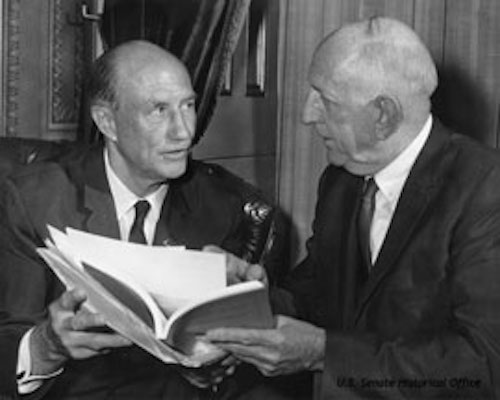 |
| Strom Thurmond and Richard Russell |
Johnson made a deal with Russell and Senator Strom Thurmond: if he defanged the bill, they would not filibuster it. One way he did so was eliminating Title III. The other way was by adding a jury trial amendment. This meant that if there was an obstruction of voting rights, the accused would be tried by a jury. Which at that time in the South meant the defendant would very likely be acquitted. Johnson had specifically targeted Kennedy as a northern vote and he sent two people to convince him to vote for it. When Kennedy resisted, LBJ himself went to his office to lobby him. The issue was presented as follows: the amendment must be added or the bill would fail. Kennedy then consulted with some Ivy League lawyers and they told him that having some kind of a Civil Rights Commission—which was largely what was left of the bill—was at least a step in the right direction. (Evans and Novak, pp. 136-37)
In contradistinction to what Levingston claims, what happened was not Kennedy siding with segregationists; it was a first term senator siding with the majority leader in order to get half a loaf instead of none. It should be added: even with Johnson’s severe alterations, Senator Strom Thurmond broke his agreement with him. He enacted a one-man record-setting filibuster. This was meant as a warning to LBJ: this was a one-time exception; don’t try it again.
 |
| Abraham Ribicoff, JFK's first choice for attorney general |
One of the silliest contentions in Levingston’s volume is that as president JFK appointed his brother Robert as attorney general because of his habit of turning to his older brother Joe in childhood tussles. In other words, he depended on his brothers to fight his battles for him. (p. 7, p. 168) Again, this fruitiness can only survive by not consulting the record. Bobby Kennedy was not JFK’s first choice for attorney general. Kennedy’s first choice was Senator Abraham Ribicoff. (Schlesinger, p. 237) So what would have become of Levingston’s argument if Ribicoff had accepted the position? And to show what a careful playwright the author is, Ribicoff is not mentioned in his book.
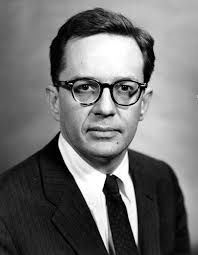 |
| Burke Marshall |
But even more damaging to Levingston’s attempt at pop-psychology is the following. President Kennedy’s first civil rights advisor, Harris Wofford, had written a long memo to him before the inauguration. That memo stated that since the upcoming civil rights battles would largely take place in court, the Department of Justice should be the focal point of the conflict. He therefore pointed out that the key spots in the administration on civil rights would be the attorney general, and his civil rights deputy. This prediction by Wofford ended up being correct. From this standpoint, Kennedy may be said to have been following Wofford’s memo, which turned out to be farsighted, especially when RFK made the fine choice of Burke Marshall as his deputy on civil rights. (Irving Bernstein, Promises Kept, pp. 40-41)
The main body of Levingston’s confection relies on a thesis he borrows from one of the most bizarre, eccentric books on the Kennedy administration ever published. This is BBC reporter Nick Bryant’s 2006 volume entitled The Bystander. Both Levingston and Bryant argue that Kennedy should have moved for a civil rights bill faster then he did. Which would mean in 1961 or 1962. (Levingston, pp. 120-21)
The problem with this idea is that there is simply no empirical evidence to sustain it. From the 1870’s to the late 1950’s, no civil rights bill had ever gotten through the southern bloc in Congress. (Evans and Novak, p. 121) And just from 1917 forward, there had been nine different attempts to do so. They all failed. (Bernstein, p. 39) As noted in Part 1, the Truman administration had tried in 1949. They were routed. As also noted, the only reason the 1957 bill got through was because Johnson had pretty much denuded it and told the southern Senate leadership—made up of Russell, Thurmond, and Sam Ervin of North Carolina—that he would do so in advance. But in 1960, when the administration tried to add to that bill to strengthen voting rights, Johnson could not defeat the filibuster. He did not even come close. (Evans and Novak, p. 221) If Johnson, the man who was the maestro, the Toscanini of the Senate, could not come close to breaking the filibuster in 1960, how could Kennedy in 1961?
On top of that, Kennedy was assured this was indeed the unfortunate state of affairs by his advisors. In his long memo planning a civil rights strategy submitted in late December of 1960, Harris Wofford did not even mention passing a bill as a possibility. (Bernstein, p. 48) Joe Clark of Pennsylvania, one of the most liberal senators in the body and a strong advocate for the issue, also told Kennedy it was not possible. (Bernstein, p. 50) The president’s chief vote-counter in Congress, Larry O’Brien, also said the votes were not there, even in 1962. (Andrew Cohen, Two Days in June, p. 82) The new Senate majority leader, Mike Mansfield, did not think a civil rights bill would pass, and this was in 1963. At that time, Vice President Johnson felt the same way; further, he thought the very attempt would kill off other parts of President Kennedy’s program. (Carl Brauer, John F. Kennedy and the Second Reconstruction, p. 245) Yet we are supposed to think that a British BBC reporter today, like Bryant, knows better than the experts on the scene did at the time.
But the ultimate proof that both Bryant and Levingston are wrong on this point emerges from the list of events that had to occur for the bill finally to pass in the summer of 1964.
- The Democrats gained four more seats in the Senate in 1963, all outside the South.
- The May 1963 televised violent demonstration in Birmingham, Alabama.
- The Kennedys’ televised showdown with Governor Wallace at the University of Alabama the following month.
- JFK’s televised watershed speech on civil rights in June of 1963.
- The murder of civil rights leader Medgar Evers on that same day.
- The televised Randolph/Rustin March on Washington in August of 1963.
- JFK’s massive, unprecedented White House lobbying effort for the bill.
- The president’s assassination in a southern city in November of 1963.
 |
| Signing the 1964 Civil Rights Act |
Even with all of those momentous events, it took one year to pass Kennedy’s civil rights bill. It was the lengthiest debate in congressional history, featuring the longest filibuster in Senate history. This is how determined the South was to block it, since they knew it would mark the beginning of the end of the system this author outlined in Part 1. How do Levingston and Bryant surmount this overwhelming evidence that they are wrong? They don’t deal with it. Talk about profiles in courage. Levingston mentions the passage of the bill in one sentence (Levingston, p. 432), while Bryant does not even refer to it. In fact, in his usual manic, over-the-top manner, Bryant says that Kennedy was not really concerned with the bill’s passage at the time of his death. (Bryant, p. 452) This is completely contradicted by the record produced in Clay Risen’s book, The Bill of the Century, describing the passage of that act. (See pages 97-134) Need I add that playwright Levingston listed the Risen book in his bibliography?
To characterize the value of the efforts of Levingston and Bryant: If the main thesis of your book—that Kennedy could have gotten a civil rights bill through earlier—is so weak and unfounded that you cannot even present the evidence that counters and neutralizes it, then, 1) How honest are you being with the reader? And 2) What is your book worth? I would add a third question: Why would you write such a book? Because to anyone familiar with the issue, the person who dawdled on civil rights was not Kennedy, it was Eisenhower.
II. Taking Aim at RFK
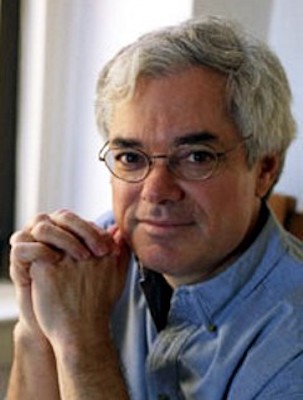 |
| David Margolick |
David Margolick’s The Promise and the Dream and Michael Eric Dyson’s What Truth Sounds Like, deal much more with Bobby Kennedy than with President Kennedy’s role in civil rights. One of the strangest parts of Margolick’s book is where he actually seems to endorse Levingston’s flatulent volume as being accurate about JFK’s role in that cause. He calls President Kennedy’s position passive for the first two years. (Margolick, p. 112) As we shall see, this is not supported by the record.
But in keeping with these questionable characterizations, Margolick, as with Levingston on JFK, wishes to shrink Bobby Kennedy in relation to King. So Bobby is represented as a committed Cold Warrior (similarly to the appraisal of his brother which has mistakenly prevailed), and that somehow, “like him and so many others, [RFK] had seen Vietnam as a place to take a stand against communism.” (Margolick, p. 235) His main source for this is a nearly fifty-year old book by David Halberstam. It is notable that he ignores the more recent research by Richard Parker which reveals that Bobby Kennedy was in the room during the November 1961 debates about committing combat troops to Vietnam. In newly discovered notes, Bobby kept insisting, “We are not sending combat troops.” This was clearly meant to back up his brother, who then said that if troops were ever sent it would only be as part of a multilateral force under the aegis of the United Nations. (The Nation, 2/24/2005, “Galbraith and Vietnam”)
Bobby Kennedy’s role in 1961 is bookended by the fact that, in 1963, he served as the liaison between his brother and the writing team of General Victor Krulak and Colonel Fletcher Prouty, who actually composed the McNamara/Taylor trip report in Washington. When it was finished, it was then bound and sent to Hawaii so Secretary of Defense Robert McNamara and General Maxwell Taylor could read it on their return trip from Saigon, on the plane flight to Washington. RFK knew that this dictated report would serve as the backing for NSAM 263, Kennedy’s order for a military withdrawal from Vietnam. (John Newman, JFK and Vietnam, p. 401) Why Margolick would use the 1969 work of a man like Halberstam, whose writing on Vietnam is pretty much obsolete, and ignore Parker, is kind of odd.
But there is some creditable work in Margolick’s book. He produces clear evidence that when Bobby Kennedy was killed in Los Angeles in June of 1968, both Jackie Kennedy and Coretta King journeyed to California to be on the plane that carried his body back to New York with Ethel Kennedy. It is as if they knew that with the murder of RFK, what their two husbands had done so much to build was now going to be dissipated. What makes this even more tragic is that Jackie Kennedy did not want RFK to run for president in 1968, because she felt he would also be killed. (Margolick, p. 312) On the plane back, Jackie said to RFK’s aide Frank Mankiewicz, “Well, now we know death, don’t we, you and I. As a matter of fact, if it weren’t for the children, we’d welcome it.” (Margolick, p. 380)
The fact that Coretta King was there may partly be due to what her husband had said a few months before, namely that Bobby Kennedy would make a great president. (Margolick, p. 295) It may also owe to what RFK did in her time of need. After her husband had been killed two months previous in Memphis, Bobby called her and asked if she needed anything. She asked if he could arrange to have King’s body transported back to Atlanta. He said he would do so but he wanted no publicity about it. He then paid for more phone lines to be tied into her home, arranged for a jet to fly her to Memphis, and booked dozens of hotel rooms for celebrities and dignitaries flying in to attend the funeral. (Margolick, p. 347) When that was done, as he previously promised, he went and met with the youths who had organized his aborted rally in Indianapolis that evening. They called themselves the Radical Action Program. (Margolick, p. 348)
I should add one more detail about RFK and the death of King. When Bobby first heard that King had been shot, he was in Muncie, Indiana. He heard about it as he was boarding a plane to fly to Indianapolis. He was not sure King was dead. But on the plane he already looked bereaved and ashen. He rejected the drafts for speeches offered by Mankiewicz and Adam Walinsky. Those were his own words he delivered. As many have said, it was probably the most memorable speech he ever gave. (Margolick, pp. 337-39) That night, as he spoke, he was wearing his brother’s overcoat.
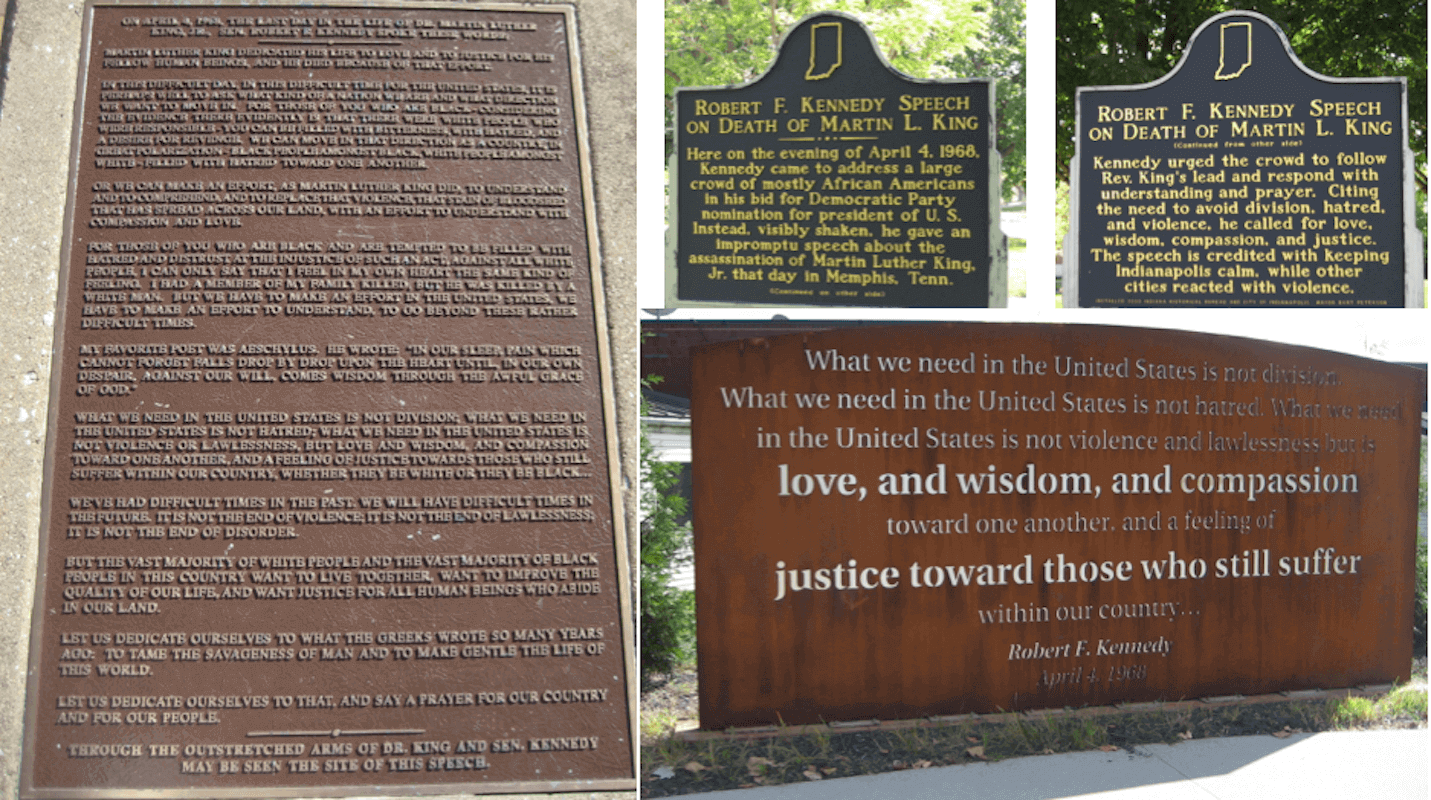 |
|
 |
Landmark for Peace Memorial |
Commenting on what RFK did that evening, the great decathlon athlete Rafer Johnson said, “Bob Kennedy knew better than anyone else, better than Martin Luther King, that if something wasn’t done … to somehow solve the racial strife, then we’re in deep trouble.” He continued by saying that no African American could have brought black militants and moderates together as Robert Kennedy could have, and no American could have spoken to both races as he did. He then concluded:
Senator Kennedy proved that color doesn’t make any difference. He was—in terms of the Negro—as much a Negro as Adam Clayton Powell … As Ralph Bunche or Senator Brooke. He was as much a Negro as Jesse Owens or Joe Louis because he did right by people. (Margolick, p. 349)
I should add that Margolick’s book is profusely illustrated with some powerful and rarely seen pictures. If one can discount the several specious passages, such as those quoted above, then the book is readable. If for some reason I had to recommend one of these four volumes, Margolick’s would be the one. But only with severe reservations—most importantly, concerning his statements that James Earl Ray killed King and Sirhan Sirhan shot Kennedy. But he worked for the NY Times for a number of years, so he has to say these things.
III. Michael Eric Dyson Commits an Atrocity
 |
| Michael Eric Dyson |
Michael Eric Dyson’s book might be the worst of the bunch, which is saying something. First of all, it is not even a book. Dyson slapped a series of disconnected essays together, put them into a small format book with large spacing between lines, and the publisher somehow had the temerity to call this a book.
Dyson begins his confection with a description of Martin Luther King’s funeral in Atlanta. Right there, on pages 2 and 3, I sensed something was upside down. Why? Because he mentions some of the luminaries who were there, like Thurgood Marshall and Richard Nixon. But he does not mention Bobby Kennedy being in attendance. And he does not note RFK’s role in arranging the ceremony, as Margolick outlined above. Dyson then adds that President Johnson was not there since he did not “want to drape the service in the controversy of the Vietnam War …”
These are hints of what Dyson is up to. Two of the goals driving his manufactured history are to do everything possible to smear RFK, and to be as soft as possible on Lyndon Johnson. For Dyson to write that Johnson was not in Atlanta because of some personal abnegation is simply not being honest about the relationship between King, Johnson and RFK, not only by 1968, but even before that. By this time, Johnson was involved in a bitter feud with both RFK and MLK. It was not just over what he had done with the Vietnam War. As we shall see, it was also over what Johnson had done with JFK’s plan to attack the problems of African Americans through a “war on poverty”, something which Bobby Kennedy had been at work on since 1961. In fact, according to Harris Wofford, the reason LBJ did not attend is because he thought he would be overshadowed by Robert Kennedy. Which is precisely what happened. According to Wofford, at the funeral, everyone understood that with King dead, RFK was their last best hope, since LBJ had blown it. (Wofford, pp. 221, 227)
Peter Kunhardt’s film, King in the Wilderness, opens with King calling Johnson from the scene of the Watts riots in 1965. It is a tense, desperate call, with King telling the president that he has to do something about the economic aspects of the race problem in order to give youths in the ghetto some hope. As we shall see, by 1968, LBJ had all but abandoned the concept begun by JFK in 1963.
But further, it is instructive to compare what King said about that riot with what Bobby Kennedy said. King saw it as a stirring of those in society who had been bypassed by the prosperity of the decade; he wished to minimize the racial aspect, since it was more the rumblings of the “have nots” inside of the affluent society. (LA Times, 8/12/15, “Viewing the Watts riots through different eyes”) Rhetorically, Bobby Kennedy went beyond King. When Eisenhower and Johnson used the word “lawbreakers” in regard to the riots, RFK replied with this: “There is no point in telling Negroes to obey the law. To many Negroes the law is the enemy. In Harlem, in Bedford Stuyvesant, it has almost always been used against them.” (Schlesinger, p. 815) Kennedy also said that too many civil rights leaders had ignored the problems in the north, so the larger population of the deprived in the north had no real leadership. He also stated that the tactics used in the south—marches and sit-ins—would not work in the northern cities. (LA Times, 8/12/15)
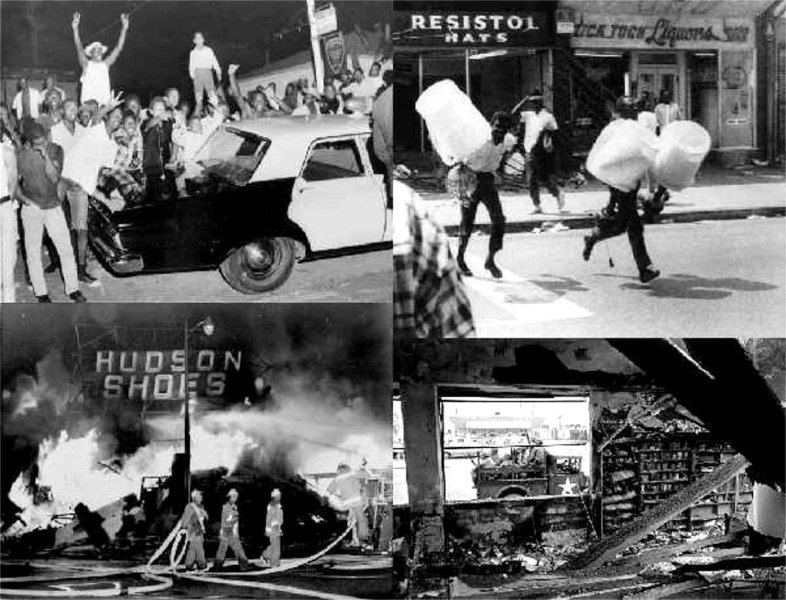 |
| Images of the Watts Riots |
The last observation by RFK is directly relevant to Dyson's principal subject. So it makes perfect sense that he would ignore it. For besides RFK and Lyndon Johnson, the third main character Dyson deals with is author James Baldwin. And as we shall also see, because Dyson is intent on smearing RFK, he correspondingly inflates and elevates Baldwin.
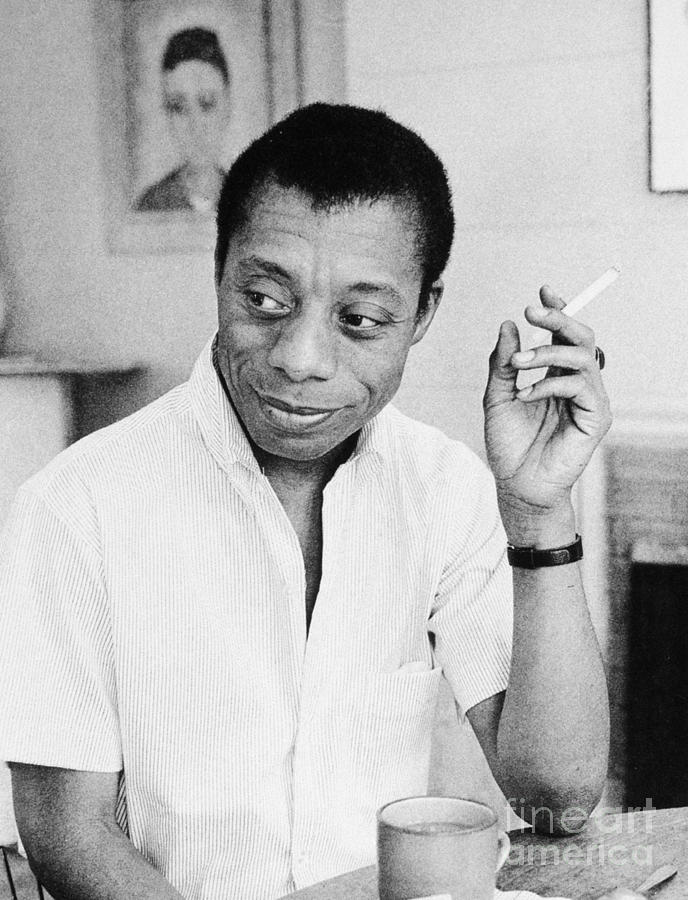 |
| James Baldwin |
Dyson’s series of essays is superficially based on a meeting that was held in May of 1963 between Attorney General Bobby Kennedy and a group of African American intellectuals, writers and artists. It is a meeting that became famous when Baldwin revealed it afterwards to a reporter from the New York Times. (Dyson, p. 11) And it has been used by hack writers like Levingston and Larry Tye to disparage RFK. After reading further on the meeting and on Baldwin, I have come to a different point of view on this matter than the MSM, and certainly Mr. Dyson.
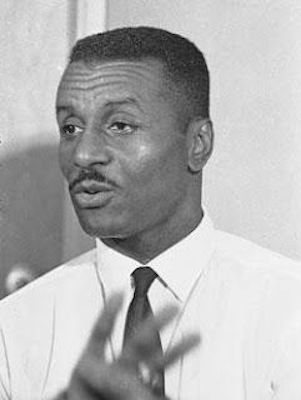 |
| Fred Shuttlesworth |
In setting the stage, Dyson shows what a poor historian he is. He says the Birmingham demonstrations were led by King. (Dyson, p. 12) Not so. Local leader Fred Shuttlesworth began the Birmingham demonstrations months before King’s group, the SCLC, ever got there. They were carried out by a group of students from nearby Miles College who were inspired by Shuttlesworth. (Diane McWhorter, Carry Me Home, pp. 265-72) It was Shuttlesworth who, in the summer of 1962, first suggested that the SCLC go to Birmingham to extend the protests. He suggested this because he thought (correctly) that Sheriff Bull Connor would play into their hands. Then, in June of 1963, Shuttlesworth pushed it on the SCLC again, but King was still noncommittal. Finally, the Birmingham leader made an impassioned plea: “We’ve been hammering away for 7 years with no impact. If segregation is going to fall, we’ve got to at least crack the wall in Birmingham!” That is what finally made the SCLC move. (McWhorter, p. 307)
Dyson follows this up with another faux pas. He writes that it was Birmingham that forced JFK to submit a civil rights bill to Congress. On February 28, 1963, well in advance of the SCLC beginning its Birmingham action, President Kennedy made a speech on civil rights. He concluded by saying that action must be taken for the simple reason that it is the right thing to do. He also said that he had gone about as far as he could with executive orders. It was time for Congress to step in and fulfill its obligations. (Clay Risen, The Bill of the Century, p. 36) He then outlined a bill he was going to send to Congress. It was the draft of this bill, praised by leaders like Whitney Young and Roy Wilkins, which formed the basis of the Civil Rights Act that was passed in 1964. Again, Risen’s book was published four years before Dyson’s. If Dyson were serious about his subject, he would have consulted that book.
But he didn’t. Dyson is only interested in polemical smears. From here, he writes one of the most preposterous passages I can recall in the literature. He says that:
… the brothers claimed interest in race but let the moment pass, and they spoke out of both sides of their political mouths, to black leaders and conservatives alike, doing little to move the racial needle. (Dyson, p. 15)
What a pile of bird dung. By the fall of 1962, with the calling in of 20,000 federal troops to quell the insurrection, partly organized by General Edwin Walker, at Ole Miss over the admittance of James Meredith, the Kennedys were now seen as the hated enemies of the South. During that battle, the rallying cry of the Klansmen was “2-4-1-3 we hate Kennedy”. Another one was “Go to Cuba, nigger lovers”. (Brauer, p. 192) The right-wingers in Alabama, knowing another showdown would occur there the next year, tried to vote out moderate Democrats who would side with the Kennedys; they had to “show the Kennedys we will not be kicked around any longer.” (Brauer, p. 201) This is why John Bohrer notes in the introduction to his book The Revolution of Robert Kennedy that the attorney general was writing a letter of resignation to his brother in November of 1963. He thought that by being too far out there on civil rights, he had lost the entire South for the 1964 election. How is this playing both sides?
What on earth is Dyson saying when he asserts that JFK had “let the moment pass” on civil rights? President Kennedy was right about the filibuster issue, as proven with abundant evidence above. The spring of 1963 was the correct moment to submit a bill, since the issue was dominating the air-waves. As per the concluding remark, how any writer can say that the Kennedys “did little to move the racial needle” is absurd. What the Kennedys did with Brown v Board in 1961, at Ole Miss in 1962, at Tuscaloosa, Alabama in 1963, and with the Civil Rights Act of 1964—just those four achievements were enough to surpass any previous administration. But there is much more, and I will enumerate it in Part 3. What can be stated here is that with this kind of junk, Dyson already acquires little credibility for the informed reader, even before he gets to the main topic of his concoction.
Baldwin had been sending telegrams and letters to RFK. (Dyson, p. 25) In May of 1963, Robert Kennedy met with Baldwin briefly at Kennedy’s home in Hickory Hill. Kennedy then asked him to bring some people he knew to his apartment in New York the next day. He would be there since he was lobbying some department store executives to give more positions in their southern stores to black applicants. (Schlesinger, p. 345) What RFK told Baldwin he wanted to discuss were ideas about attacking the racial problem in the north. (Robert Kennedy in his Own Words, Ed Guthman & Jeff Shulman, eds., p. 223)
There is some confusion about who was at the meeting. But to be fair to Dyson, this is his roster of African Americans:
- Clarence Jones—King’s attorney
- Edwin Berry—member of the Chicago Urban League
- Kenneth Clark—an illustrious social scientist studying urban poverty
- Harry Belafonte—celebrity singer and actor
- Lena Horne—celebrity dancer, actress and singer
- Lorraine Hansberry—reporter and playwright, author of A Raisin in the Sun
- Jerome Smith—activist for the civil rights group CORE, rode on the Freedom Rides
There were four white persons there. Baldwin had invited the actor Rip Torn, and Kennedy was accompanied by two assistants, Burke Marshall and Ed Guthman.
Since it was an informal meeting, there was no stenographic record. We are thus reliant upon people who were there to convey what happened. By most accounts, Kennedy started the meeting trying to state what the administration had done in the South up to that time. This was clearly meant as a segue to what he wanted to talk about now: addressing the urban cities in the north. Which, considering the series of devastating and deadly riots that occurred from about 1965-1967, seems rather prescient.
By almost every account, the discussion never got that far. Smith shattered any kind of profitable discussion by saying that being in the room with Robert Kennedy made him want to vomit. (Risen, p. 51; Dyson, p. 43) Before we get to why Smith said something like that and why he was wrong in saying it, I wish to ask a pertinent question no one has ever posed before, namely: What was Smith doing there? If the discussion was to be about countering racism in the north, what did Smith know about that? Smith was born in the South and joined the CORE [Congress of Racial Equality] faction in New Orleans. The bill the Kennedys were revising for congressional passage was aimed at the eradication of Jim Crow in the South. As noted above, Bobby Kennedy stated, in his response to Eisenhower and Johnson about the Watts riots, that he knew it would take different leadership and tactics to address problems in the north. So what were Smith’s qualifications in this regard?
Needless to say, Smith completely sidetracked the conversation. He seemed to be striking out at RFK personally because he had been attacked during the Freedom Rides in 1961. And this managed to turn the conversation into a kind of competition. Reportedly, Clark and Berry had come to discuss what Bobby Kennedy wanted to talk about. (Schlesinger, p. 345) But that all went out the window with Smith’s sideswipe and Baldwin’s encouragement of it. In fact, Hansberry actually said that the man RFK should be listening to was Smith, in spite of the fact that JFK’s bill was designed to eliminate discrimination in the South. (Schlesinger, p. 345)
Dyson is such a cheerleader for Baldwin that he never even ponders the fact that Smith may have been wrong in his vindictiveness. For instance, one of the things that Smith reportedly said was that Bobby Kennedy’s men stood around taking notes while he was getting beaten up. This is not accurate. It was the FBI that stood around. And what makes it worse is that the informant the Bureau had inside the Klan cadre that performed the assault had actually told them a week in advance that the Freedom Riders attack was coming. That information never got to the attorney general. (Schlesinger, p. 307; Wofford, p. 152) When Bobby did learn about the attacks, he sent two of his men to the scene: John Siegenthaler and John Doar. Siegenthaler tried to help a fleeing victim who warned him he was going to get hurt. He was then clubbed unconscious and sent to the hospital. Doar was on the phone from Montgomery telling RFK what was happening. When Kennedy learned that the local authorities were not doing anything to keep order, the attorney general sent in five hundred marshals under the command of his assistant Byron White. (Schlesinger, p. 309)
As Bobby Kennedy said more than once, he did not know the Freedom Riders were going to test the interstate buses when they did. (Schlesinger, p. 307) During an oral history interview for the JFK library, he once said that he first learned about it in the papers. And in fact, while the Riders had been in the upper South, there were no notable disturbances. But once they entered the Deep South, things got brutally violent. As the attorney general said, a mobile demonstration like this was pretty much unprecedented. He and Burke Marshall were working the phones willy-nilly trying to find ways to save the situation.
But the attacks could have all been prevented. And it was not just J. Edgar Hoover’s fault. The organization Smith worked with, CORE, had chosen to make it a dramatic confrontation. As Harris Wofford wrote in his book, Bobby Kennedy had met with some civil rights leaders at his office in April. They had asked him about this very issue: when interstate transportation would be straightened out and the segregation signs pulled down at the terminals. A Supreme Court case had been decided in that regard two months prior. The attorney general said he was working on it at the time but the body involved with the details, the Interstate Commerce Commission, was slow in issuing its orders. CORE was one of the groups in attendance at that meeting. They did not tell Kennedy about their planned Freedom Rides scheduled for the next month. Why? As their leader James Farmer later explained, “Our philosophy was simple. We put on pressure and create a crisis and then they react.” (Wofford, p. 151) The first edition of Wofford’s book was released in 1980. Are we to believe that Dyson never read it? This is why his book is so mistitled. Smith’s outburst was not based on truth. Not even close. So the book’s proper title is: What Ignorance Sounds Like.
Based on this false information, most everyone in the room either joined Smith’s side or stayed quiet, even when Bobby Kennedy said things that were clearly correct. For instance, that his department had helped King in Birmingham—which they had done by raising bail money and monitoring King’s treatment while he was arrested and imprisoned. They also sent Burke Marshall to arrange a settlement between the city and the civil rights demonstrators to begin integration. When RFK brought this up, they laughed and jeered. (Schlesinger, pp. 342-43, 47) After the meeting was over, Clarence Jones tried to make amends to RFK since he knew that this was the case. Belafonte also tried to explain his silence. His excuse was that if he sided with RFK he would forfeit his position with the others, whom he still had a chance to influence. (Schlesinger, p. 347)
Some have tried to say, as Dyson does, that this meeting somehow helped the attorney general by sensitizing him. I disagree. By this point, Bobby Kennedy had been at this for going on three years. He understood the situation, and as Belafonte had told him, he had done more for civil rights than any prior attorney general. What this meeting did was convince RFK that he had to consult with men like King and Wilkins, and later Cesar Chavez, on minority rights, because those men had a degree of understanding, knowledge and vision about them. Baldwin was so misinformed on the racial issue that he once verbally attacked the perennial champion of that cause, Washington lawyer Joe Rauh, in his own house. (Michael Parrish, Citizen Rauh, p. 155) Even someone as moderate as Henry Louis Gates, who liked Baldwin and is featured in the writer’s last play, has said that as a civil rights leader Baldwin had neither a grasp on his role nor an unambiguous message. And when this was discovered later, “he was relieved of his duties and shunted aside as an elder and retired statesman.” (Herb Boyd, Baldwin’s Harlem, p. 156)
After reading three books on Baldwin, I would have to agree. Baldwin simply did not possess the emotional or mental stability to be any kind of a political leader. Even his sympathetic biographer, David Leeming, understood this. He begins his volume by describing Baldwin as somewhat paranoid and not always psychologically or emotionally stable. (James Baldwin: A Biography, p. xii) He further notes that, by 1967-68, Baldwin thought that people like Stokely Carmichael, Huey Newton and H. Rap Brown were the new hope of the black movement. If the reader can comprehend it, Baldwin predicted that this new emerging black consciousness meant the beginning of the end of America. (Leeming, pp. 292, 311) This is why the celebrated African American journalist Ralph Matthews once called Baldwin the Genghis Khan of the civil rights movement. (Schmitt, p. 57) I could go on about Baldwin, but I really don’t think pointing out all of his personal and public failings is worth it, except to show that Dyson is intent on concealing them.
Let me gladly conclude my discussion of Dyson’s sorry pastiche by addressing his points about Lyndon Johnson and civil rights. He gives Johnson credit for the Civil Rights Act of 1964, the Voting Rights Act of 1965 and the Fair Housing Act of 1968. (Dyson, p. 56) This makes Dyson one of the worst historians ever. As mentioned previously, Clay Risen’s book proves that Johnson did little to pass the 1964 act. The men who were most responsible for breaking the filibuster were Robert Kennedy, his Department of Justice team, Senator Thomas Kuchel, and Senator Hubert Humphrey. (Risen, pp. 222-23)
As per the Voting Rights act of 1965, Johnson told King that he did not have enough capital left after the 1964 act to get that bill passed—unless King did something. So King did something in Selma. (Louis Menand, “The Color of Law”, The New Yorker, July 8, 2013) For this writer, that was King’s most significant achievement. For Dyson to give the credit to Johnson shows just how agenda-driven he is.
As per the 1968 Fair Housing Act, this was an expansion and extension of what President Kennedy had signed into law in late 1962. Johnson sent this bill up in 1966. But it only passed in 1968, as a result of King’s assassination.
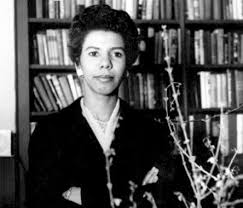 |
| Lorraine Hansberry reporter, playwright, author |
The rest of Dyson’s screed is just as useless as the first part. Since he has to fill out a couple of hundred pages, he now attempts to relate the African Americans at the meeting to modern day equivalents. Anybody who would parallel the work of someone like Hansberry with the films Black Panther and Get Out! is an even worse cultural critic than historian. He gets even sillier when he tries to say that Muhammad Ali—who was not there—was some kind of civil rights leader of the sixties. The man who really fits that bill is the great NFL running back Jim Brown. But Dyson does not want to go in that direction, since Brown has little but disdain for most of the black athletes of today.
The worst thing about Dyson’s mess is that Amy Goodman of Democracy Now chose to feature it on the anniversary of Robert Kennedy’s assassination this year. In other words, the individual who did so much to get the 1964 Civil Rights Act passed, who came out strongly against Johnson’s mad pursuit of the Vietnam War, who faced off against Governor Wallace at the University of Alabama, who encouraged the peasants of Brazil to overthrow their government in 1965, who ran the incandescent progressive campaign of 1968—this figure was entirely ignored. On the fiftieth anniversary of Bobby Kennedy’s assassination, Amy Goodman wanted her listeners to remember RFK through Dyson’s completely lopsided view of his dispute with James Baldwin and Jerome Smith. And to also ignore the good that could have come out of that meeting if Smith and Baldwin had not been there.
What a disgrace.


